Table of Contents Show
Shaving cream is a cosmetic product that is used to soften the hair and provide lubrication for shaving. It can also help prevent razor burns, irritation, and ingrown hairs. But how did shaving cream come to be? What are the different types of shaving cream and how do they work?
In this article, we will explore the history of shaving cream from ancient times to the present day.
The Origins History of Shaving Cream: Sumer and Egypt


The earliest recorded use of shaving cream dates back to around 3000 BC in Sumer, a civilization that existed in Mesopotamia (modern-day Iraq). The Sumerians used animal fats and ashes from wood to create primitive soaps that they applied to their beards before shaving. This mixture was similar to the way they removed fur from animal hides.
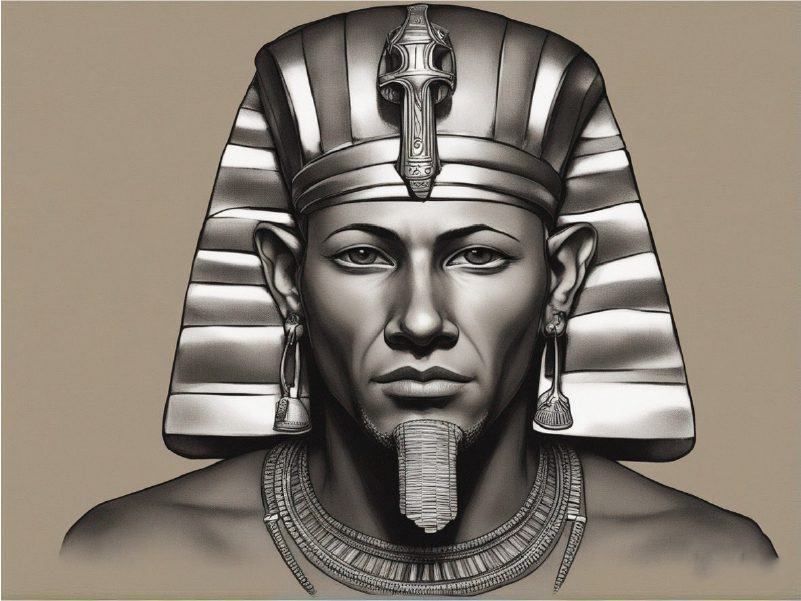

The practice of shaving spread to Egypt, where it was associated with cleanliness, hygiene, and social status. The Egyptians used bronze razors and shaving cream made of animal fat and oil. However, they also valued facial hair as a symbol of masculinity and power, so they often wore fake beards for ceremonial purposes or during wars.
The Evolution & History of Shaving Cream: Greece, Rome, and the Middle Ages
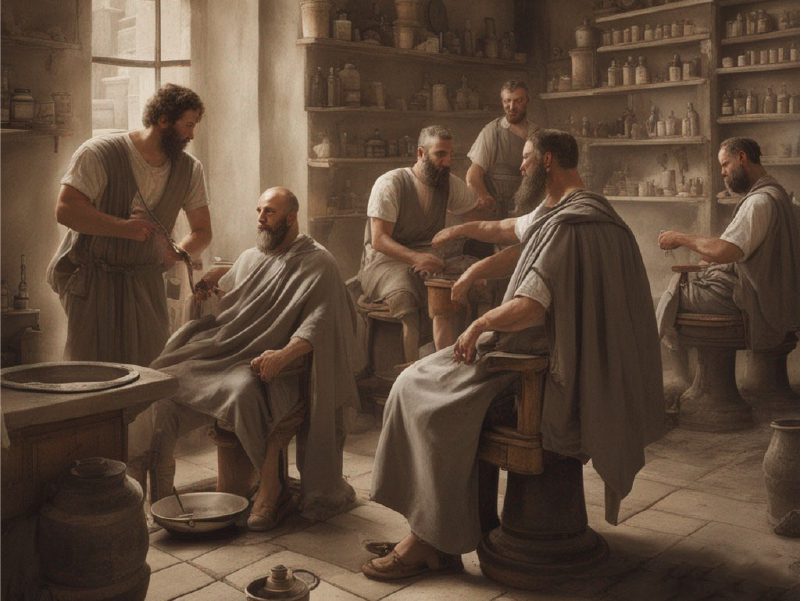

The Greeks and Romans also adopted shaving as a sign of civilization and culture. They used iron razors and various substances as shaving creams, such as olive oil, honey, vinegar, or even spider webs. They also invented the shaving brush, which was used to create a lather from soap or cream.
During the Middle Ages, shaving became less common due to the influence of Christianity, which regarded beards as a mark of piety and wisdom. However, some people still shaved for practical or aesthetic reasons, using soap or water as shaving creams
The Modernization ERA History of Shaving Cream: The 19th and 20th Centuries
The 19th century saw the development of new shaving tools and products, such as steel razors, safety razors, straight razors, and barber shops. Shaving creams also became more sophisticated, using ingredients such as glycerin, lanolin, stearic acid, and perfume. Some of the first brands of shaving soap were Williams (1840), Colgate (1866), and Palmolive (1898).
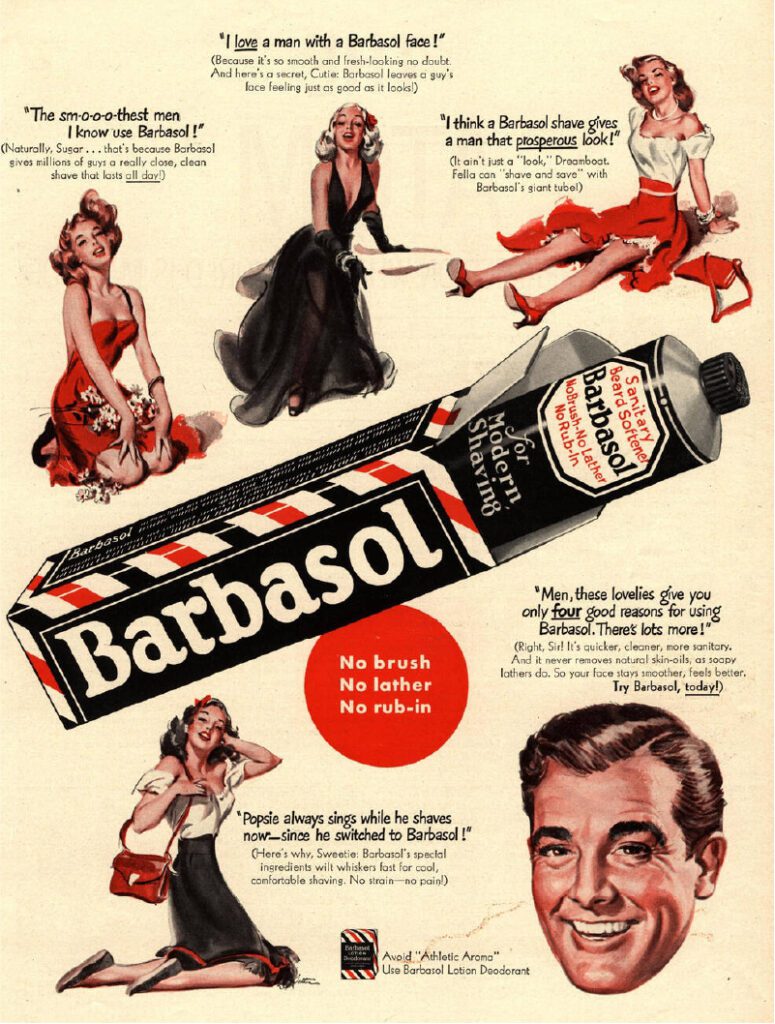

The 20th century witnessed the invention of the first shaving cream in a tube by Frank Shields in 1919. His product was called Barbasol and offered men an alternative to using a brush to work soap into a lather. Barbasol was filled and packaged by hand in Indianapolis and became a popular brand worldwide.
In 1949, the first aerosol shaving cream was introduced by Rise. It used pressurized gas to dispense a foamy cream from a can. This format became very popular in the following decades, as it was convenient and easy to use. However, it also had some drawbacks, such as using chlorofluorocarbons (CFCs) as propellants, which were later banned for harming the ozone layer.
In the 1970s, shaving gel was developed as another option for shaving cream. It was thicker and more moisturizing than foam and could be applied directly to the skin without a brush. In 1993, Procter & Gamble patented a post-foaming gel that turned into foam after being applied to the skin, combining the properties of both foam and gel.
The Current Trends of Shaving Cream: The 21st Century
Today, there are many types and brands of shaving cream available on the market, catering to different preferences and needs. Some of the most common types are:
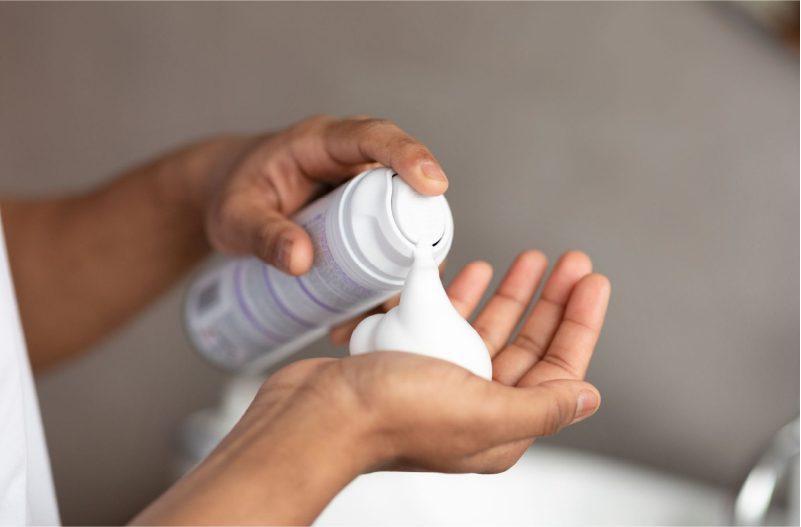

Aerosol shaving cream: This is the most widely used type of shaving cream. It comes in a pressurized can that dispenses a ready-made foam with the push of a button. It is easy and quick to use but may contain chemicals that can dry out or irritate the skin.
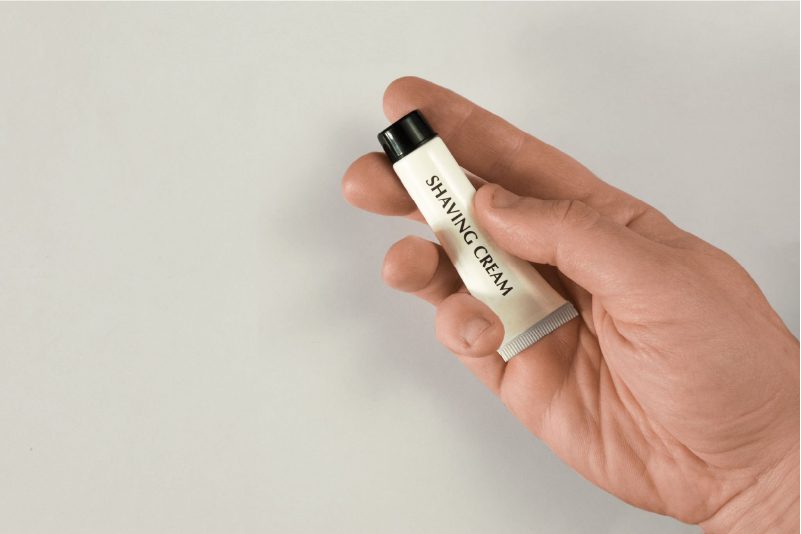

Latherless shaving cream: This is also known as brushless or non-aerosol shaving cream. It comes in a tube or jar and has a creamy consistency that can be applied directly to the skin without a brush or water. It is more moisturizing and gentle than aerosol shaving cream but may not provide enough cushion or glide for some razors.
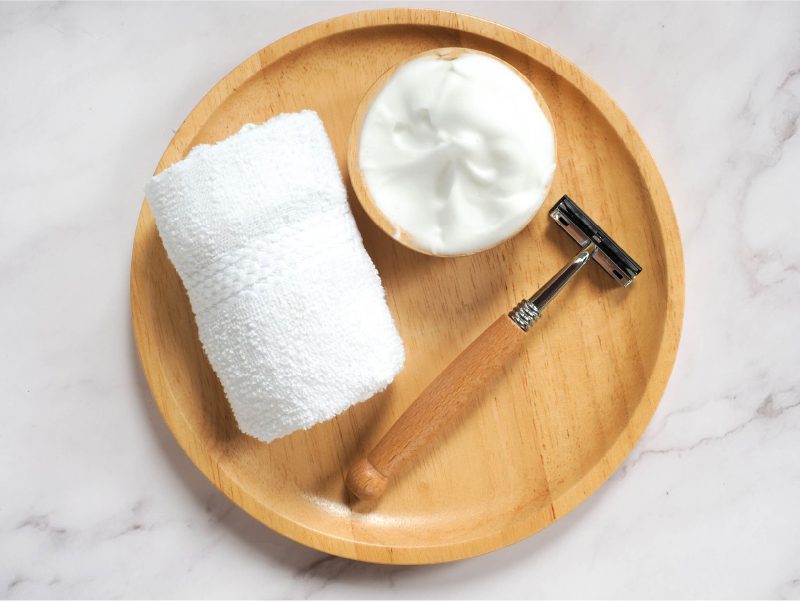

Lather shaving cream: This is also known as lathering or traditional shaving cream. It comes in a tube or jar and has a soft consistency that can be whipped into a rich lather with a shaving brush and water. It is more natural and nourishing than aerosol or latherless shaving cream but requires more time and skill to use.
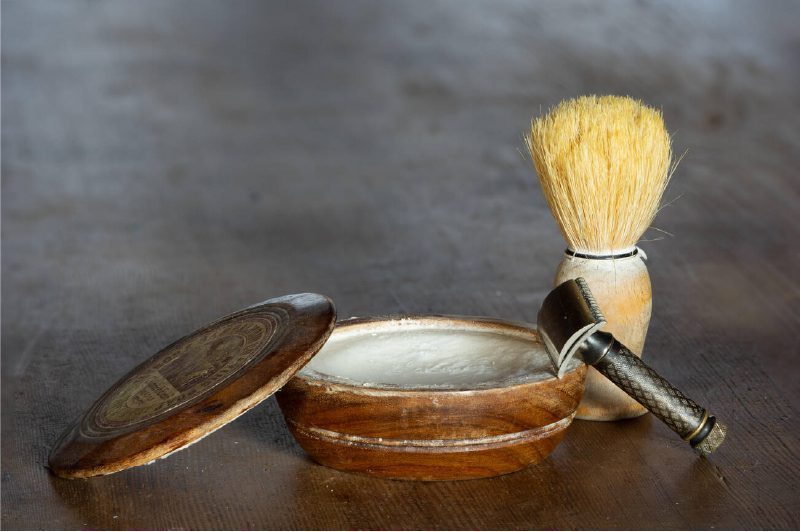

Shaving soap: This is the oldest and most classic type of shaving cream. It comes in a solid bar or puck that can be loaded into a shaving bowl or mug and lathered with a shaving brush and water. It is the most economical and eco-friendly option but also the most difficult to master.
Some of the most popular brands of shaving cream today include:
- Barbasol: This is the oldest and most iconic brand of shaving cream in America. It was founded in 1919 by Frank Shields and is still based in Indianapolis. It offers a range of aerosol shaving creams with different scents and formulas, such as Original, Soothing Aloe, Sensitive Skin, and Pacific Rush.
- Proraso: This is the most famous brand of shaving cream in Italy. It was founded in 1908 by Ludovico Martelli and is still family-owned. It offers a range of lather shaving creams with natural ingredients and distinctive fragrances, such as Green (Eucalyptus and Menthol), Red (Sandalwood and Shea Butter), White (Green Tea and Oatmeal), and Blue (Aloe Vera and Vitamin E).
- Taylor of Old Bond Street: This is one of the most prestigious brands of shaving cream in England. It was founded in 1854 by Jeremiah Taylor and is still run by his descendants. It offers a range of lather shaving creams with luxurious ingredients and refined scents, such as Sandalwood, Coconut, Grapefruit, and Peppermint.
- Castle Forbes: This is one of the most exclusive brands of shaving cream in Scotland. It was founded in 1996 by Andrew French and Jinny Forbes, the wife of Malcolm Forbes, the 23rd Lord Forbes. It offers a range of lather shaving creams with high-quality ingredients and sophisticated aromas, such as Lavender, Lime, Cedarwood, and Vetiver.
The Future of Shaving Cream: What’s Next?
Shaving cream is a product that has evolved over time to meet the changing needs and tastes of consumers. As technology advances and trends shift, new types and brands of shaving cream may emerge to offer new benefits and experiences. Some of the possible developments are:
- Organic and natural shaving cream: As more people become aware of the environmental and health impacts of synthetic chemicals, there may be an increased demand for organic and natural shaving cream that uses plant-based ingredients and avoids artificial preservatives, colors, or fragrances.
- Customized shaving cream: As more people seek personalized products that suit their individual preferences and needs, there may be an opportunity for customized shaving cream that allows consumers to choose their own ingredients, scents, textures, or packaging.
- Smart shaving cream: As more devices become connected to the internet and capable of collecting data, there may be a possibility for a smart shaving cream that can monitor the skin condition, hair growth, or shaving habits of users and adjust its formula or function accordingly.
Conclusion
Shaving cream is a product that has a long and fascinating history that reflects the culture and society of different times and places. From animal fat to aerosol foam, from Sumer to Scotland, from bronze razors to electric shavers, shaving cream has accompanied men (and women) in their grooming routines for thousands of years.
Today, there are many types and brands of shaving cream available on the market that offer different benefits and experiences for different users.
In the future, there may be even more innovations and options for shaving cream that will make shaving easier, more enjoyable, or more effective.
FAQs
Q: What is the purpose of shaving cream?
A: The purpose of shaving cream is to soften the hair by providing lubrication, cushioning, hydration, protection, and fragrance for shaving.
Q: What are the main ingredients of shaving cream?
A: The main ingredients of shaving cream are water, soap or surfactant, oil or fat, glycerin or humectant, emulsifier, foaming agent, preservative, perfume, and colorant.
Q: How do you use shaving cream?
A: The way you use shaving cream depends on the type of shaving cream you have. For aerosol shaving cream, you simply shake the can well, dispense a small amount onto your palm or directly onto your face, spread it evenly over your wet skin with your fingers or a brush, shave with your razor of choice, rinse off with water, and apply an aftershave product if desired.
For latherless shaving cream, you squeeze a small amount onto your palm or directly onto your face, spread it evenly over your dry or damp skin with your fingers or a brush, shave with your razor of choice, rinse off with water, and apply an aftershave product if desired. For lather shaving cream, you wet your shaving brush with warm water, load it with a small amount of shaving cream from the tube or jar, build a rich lather in a shaving bowl or mug or directly on your face, shave with your razor of choice, rinse off with water, and apply an aftershave product if desired.
For shaving soap, you wet your shaving brush with warm water, swirl it over the soap bar or puck in a circular motion until thick lather forms, apply the lather to your face with the brush using back and forth strokes, shave with your razor of choice, rinse off with water, and apply an aftershave product if desired.
Q: What are the benefits of using shaving cream?
A: The benefits of using shaving cream are that it can make shaving easier, more comfortable, and more effective by softening the hair, reducing friction, preventing cuts, nicks, irritation, and ingrown hairs, moisturizing and nourishing the skin, and adding a pleasant scent.
Q: What are the drawbacks of using shaving cream?
A: The drawbacks of using shaving cream are that it can be expensive, wasteful, or harmful depending on the type and brand of shaving cream you use. Some shaving creams may contain chemicals that can dry out or irritate the skin, cause allergic reactions, or damage the environment. Some shaving creams may also clog the razor blades, making them dull or rusty. Some shaving creams may also require additional tools or accessories, such as a brush, a bowl, or a mug.
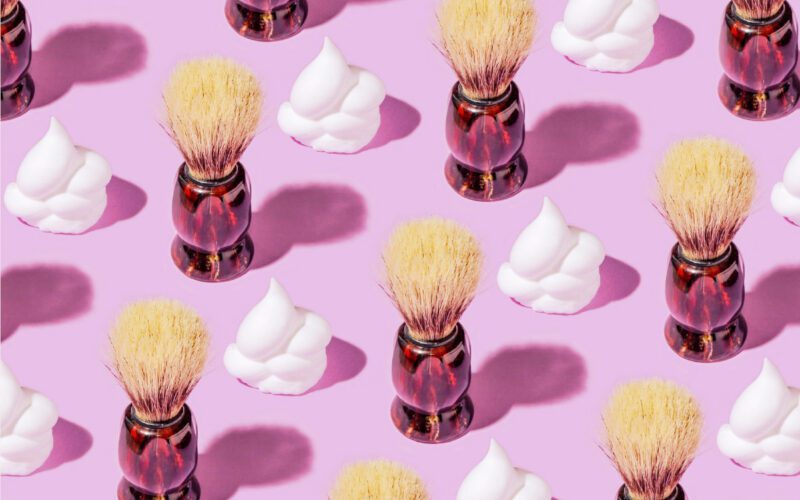



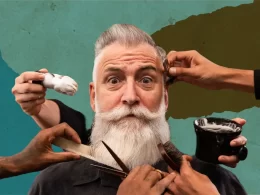
Comments 1
Comments are closed.